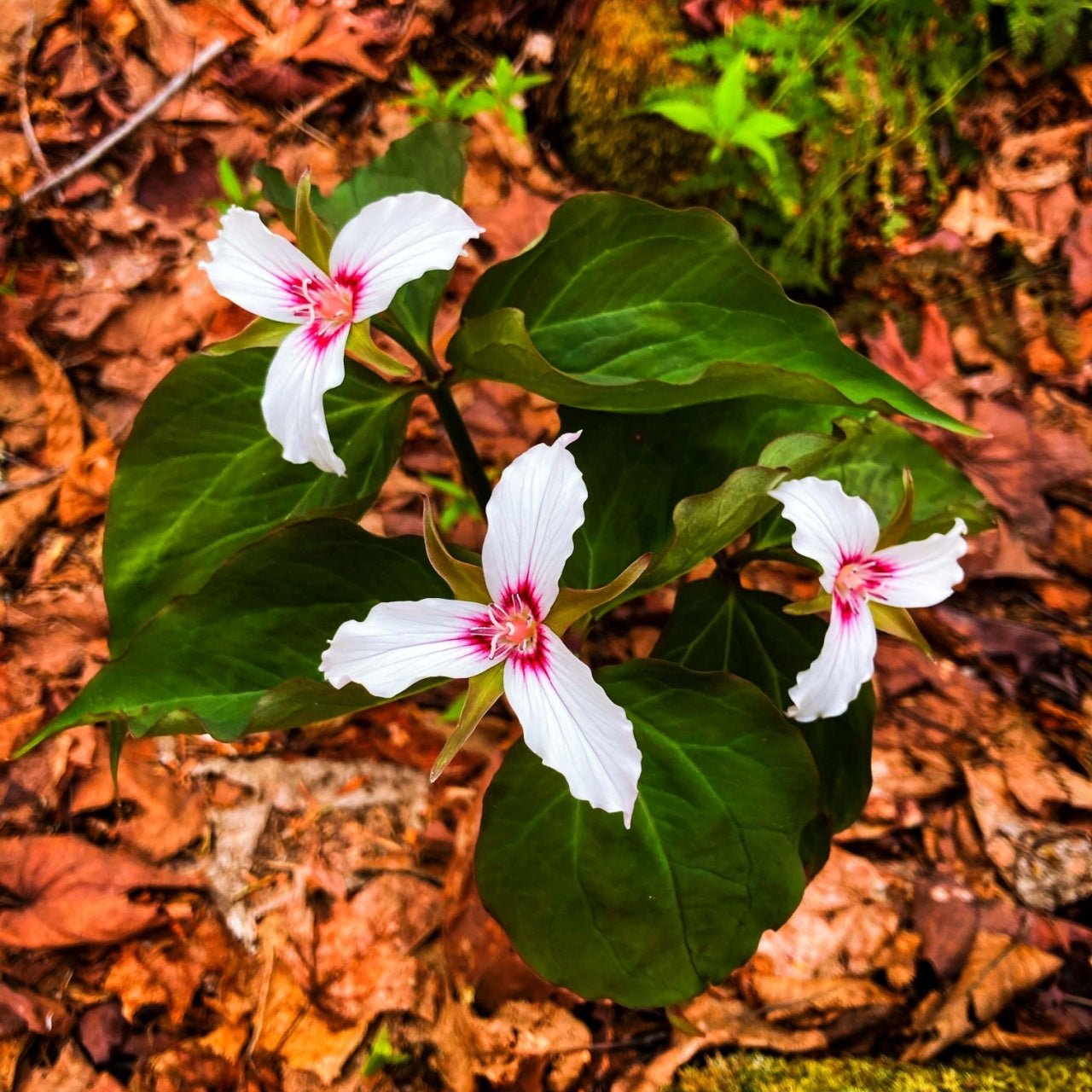A vibrant flower garden brings sun-drenched landscapes to your mind. Your garden might be shaded by large trees or located on the north side of your home. Shaded gardens can achieve great potential without any limitations. A variety of native and ornamental perennial flowers flourish under shaded conditions while providing texture and color throughout different seasons. This exploration focuses on the best perennial flowers suited to shaded areas that feature native varieties that thrive annually with minimal maintenance.
Native Shade-Loving Perennials That Steal the Spotlight
Native perennial flowers for shaded areas represent an excellent choice for gardeners who want an eco-friendly and easy-to-maintain garden. Plants native to your area develop a natural resistance to your climate and soil conditions while attracting beneficial pollinators.
Trillium (Trillium spp.) Eastern North American woodlands cherish this native flower for its beauty and appeal. The plant features beautiful three-petaled flowers and clover-like leaves to add soft elegance to shaded areas. The flowers appear in early spring and become dormant by midsummer therefore they should be planted alongside plants that bloom later to keep your garden interesting.
Woodland gardens become vibrant with the nodding bell-shaped blue clusters of Virginia Bluebells (Mertensia virginica). These plants generate a dreamy spring display that looks stunning when combined with ferns or hostas.
Wild Ginger (Asarum canadense) produces small hidden burgundy flowers near the soil line while providing heart-shaped leaves and ground-cover benefits. This plant flourishes in damp shaded locations and combines perfectly with other perennials that require shade.
Native shade perennials benefit local wildlife while eliminating invasive plants and maintaining performance in shaded garden beds over time.
Top Flowering Perennials That Thrive in Full or Partial Shade
Native plants provide strong landscape foundations but you should include classic shade-tolerant perennials to complete your garden design. Shade-tolerant flowers provide consistent color and performance throughout areas with partial sunlight or complete shade.
Astilbe attracts gardeners with its plume-like flowers resembling feathers and foliage resembling ferns. Astilbe plants provide vertical garden interest with their availability in pink, red and white colors while growing best in moist and shaded beds. It’s perfect for borders and rain gardens.
Bleeding Heart (Dicentra spectabilis) stands out among cottage garden plants because of its graceful stems supporting heart-shaped flowers. This plant provides excellent early-season color and works well when planted alongside other spring-blooming flowers.
Hellebores bloom during late winter through early spring when most other plants remain dormant. Hellebores display downward-facing flowers that feature colors ranging from burgundy to cream and green with frequent patterns of speckles or ruffled petals. Many climates allow hellebores to maintain their foliage throughout the year while they also resist deer.
Toad Lily (Tricyrtis spp.) The Toad Lily produces exotic flowers speckled like orchids when it blooms late in the growing season. This species flourishes within woodland garden settings while adding vibrant hues during the autumn months when other plants begin their dormancy period.
Shade-loving perennial plants demonstrate that flowers designed for shaded environments can rival sun-loving varieties in both color vibrancy and gardening satisfaction.
How to Design a Shade Garden That Thrives Year After Year
A successful shade garden design using low-light perennial flowers needs careful planning of plant textures along with their respective heights and bloom periods. Assess your shade conditions first because different plants will grow in light or filtered shade, and others will need deep shade.
Layer your perennials in tiers. Position taller native plants like Solomon’s Seal (Polygonatum biflorum) with graceful arching stems and white bell-shaped flowers toward the back of your garden. Ferns and Hostas serve as the mid-sized flowering plants that establish green backdrops in the central garden area. Wild Ginger and Creeping Jenny serve as effective ground covers to fill the spaces around borders and between paving stones.
Although shaded area soil remains moist for extended periods you should still add organic compost to it. Shade-loving plants reach their potential best in rich soils that drain well and resemble forest floor conditions.
Don't forget foliage. Shade-loving plants such as Brunnera and variegated Hostas feature beautiful foliage that maintains visual appeal throughout the year even after the flowering period ends. Your garden will achieve a polished look when you combine different foliage colors and textures.
Lastly, aim for seasonal variety. Plant Virginia Bluebells for spring blooms alongside summer Astilbe performers and fall Toad Lilies to maintain garden beauty throughout the year.
Conclusion
Shade-loving perennial flowers which range from early-spring woodland natives to late-season exotic-looking blooms enable you to design a vibrant garden in even the darkest areas. Use native species alongside moisture-loving flowers and textured leaves to create dynamic garden displays that improve annually.





